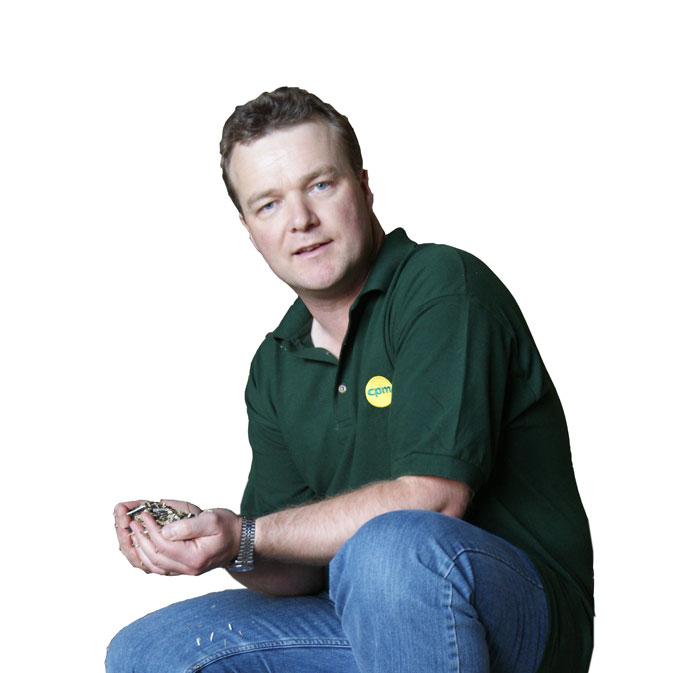There’s one word that seems to be cropping up time and time again, and increasingly so as Brexit approaches: Innovation.
Quite rightly so – it’s the very oxygen of progress. As Britain’s farmers are cast into a competitive world without the mantle of EU protectionism, it’ll be their ability to innovate that will determine whether they thrive or survive. For CPM, the concept is nothing new and regular readers will know the quest for true innovation lies at the heart of every article we present.
But everyone’s now talking about it – from the CLA, who hosted an innovation conference recently at Harper Adams University, to Bayer for whom it was the central theme in its Future of Farming Dialog. Research institutes, distributors and farm-trials practitioners vex about making it happen. It’s a core government policy objective, with Michael Gove pledging to support innovation. Theresa May even spluttered out the word several times in between coughing fits at the Conservative Party Conference.
It’s needed because arable businesses are flat-lining. Over the past decade, total factor productivity for UK agriculture grew at just 0.8%, according to Defra. This is far below the global average of 2% and some way behind the US, France, Germany, New Zealand and Australia. UK farmers appear relatively ill equipped to face society’s requirement to grow more using the same or even less resource.
So how does it happen? The priorities have been identified and are summarised in the 2012 Feeding the Future report, undertaken by NFU, AIC, RASE, AHDB and NFU Scotland. A recent review of this has noted how the research community has since come together with a number of new research and knowledge exchange (KE) initiatives now underway. Such collaboration and coordination are key recent developments that make research more tangible and the benefits seem more real.
But this falls short of true on-farm innovation – change that’s embraced by progressive farmers, who shape new technologies, share their ideas, and pull farming off its productivity plateau.
To my mind, there are two fundamental factors to address. Firstly, there’s the supply of innovations themselves, which was discussed at Bayer’s global gathering. There’s no shortage of innovation in agriculture, but the EU presents such unfeasible and unpredictable barriers that R&D budgets have now shifted focus to other parts of the world.
This will only get worse as the UK withdraws its influence from the EU – the CRD has been doing the lion’s share of the considerable workload of regulatory approvals for Europe recently. It’s well resourced and marries sound science with due regard for the precautionary principle. Few regulatory authorities around the world would be better equipped or have the in-house expertise to manage the safe introduction of new breeding technologies and biologicals, for example, that hold such promise for arable farmers.
But outside Europe, CRD’s role will shrink to virtually nothing. What global operator will want to bring their great new farming innovations to the tiny UK market? The pressure on Defra to cut CRD’s budget will be insuperable and a great resource will be lost.
Secondly, there’s the farmers themselves. Many do their own on-farm trials, and there are now networks that support this, such as ADAS’ Yield Enhancement Network, AHDB’s Monitor Farms and BASF’s Real Results Circle. Through CPM, we’ve told the story of dozens of individuals and the benefits they’ve brought to their business through their own on-farm trials. Collectively, there’s so much potential for this work to bring true innovation and progression to the industry.
So CPM’s starting a campaign to Cultivate Innovation. The twin aims are bold, but achievable:
- We want a regulatory framework in the UK that positively encourages innovation, based on sound science, with proper practice of the precautionary principle.
- We want a co-ordinated approach to on-farm trials – one that empowers the progressive farmers who undertake them, to work with researchers and make a step-change in how innovations are pulled through into on-farm practice.
Marry these two objectives and you have the potential for the UK to become a test bed for innovation. New technologies could be brought first to a network of innovative farmers who work with regulators and the researchers behind the ideas to shape their progression. This could not only jump-start UK agricultural productivity, but nurture a new Green Revolution and address no less than the global challenge of malnutrition itself.
CPM will do its part – we’re already renowned as the arable technical journal which leads the way in communicating technical advances to the UK arable sector. For 2018, we’re introducing a new section in the magazine – titled ‘Innovation’, it will champion this area.
We’re redoubling our efforts in working with leaders in their field to explore new ideas, explain their potential and involve you in how we can take them forward. We’ll also be working harder behind the scenes with other organisations and commercial interests who are aiming to deliver a plan for progression for UK Agriculture by the time Britain exits the EU in March 2019.
So if you feel the same way as us about innovation, you’re already reading the leading journal for reliable new ideas in the arable sector. We’re going to help you further in implementing those ideas and getting true value from them.
Tom Allen-Stevens is editor of CPM and has a 170ha arable farm in Oxon. @TomAllenStevens




